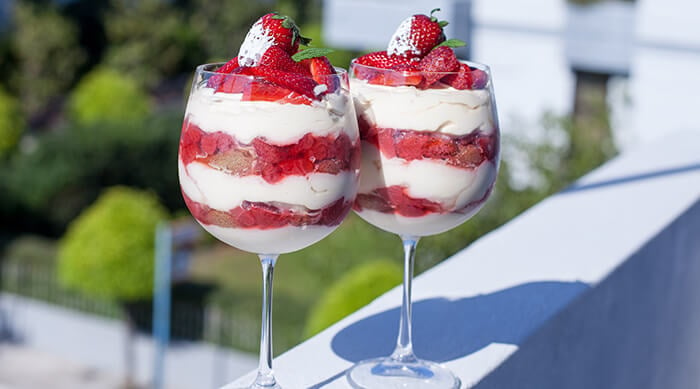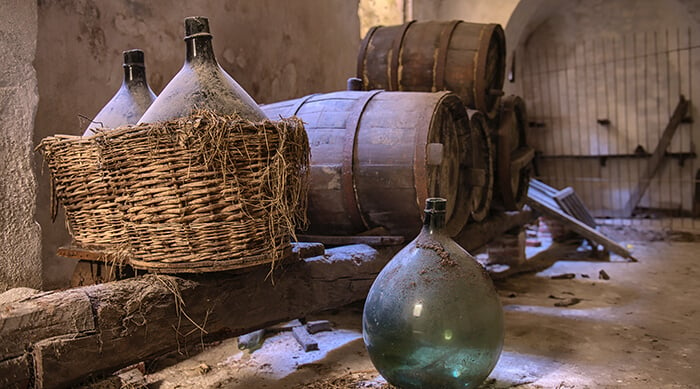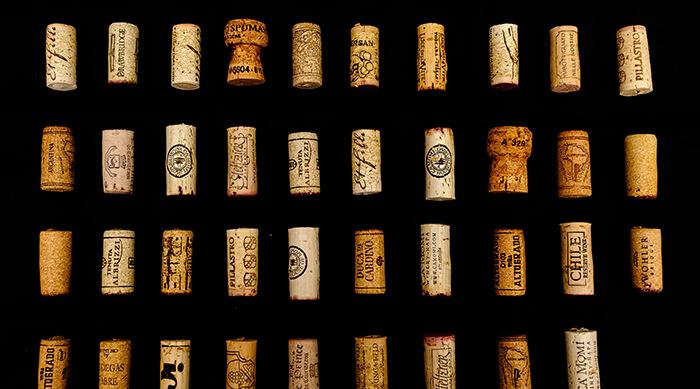Red wine has more calories than white wine and sparkling varietals. The difference isn’t a big one, though. If you’re worried about wine calories, the amount you drink is more impactful than the varietal.
There are about 120-125 calories in a standard 5-ounce glass of red wine. Most white wines have about 120 calories for the same amount of wine.
As long as you’re enjoying your wine in moderation, that many calories shouldn’t make or break your diet. Let’s take a closer look at why your overall wine habits matter more if you’re seeking a healthier routine.
Why Red Wine Has Calories
The number of calories in red wine comes from the alcohol content and sugar content in a standard pour.
Dessert wines and sweet wines with more residual sugar have more calories than dry red wine or a dry white. Some winemakers even add sugar after fermentation to bump up the sweetness, but this is usually a sign of a lower-quality wine.
Fortified wines with a high ABV and high sugar content can have up to twice as many calories as a standard serving of red wine. That includes ports and sherries that have been fortified with a distilled spirit before bottling.
Red wines with higher alcohol by volume (ABV) also typically have more net carbs. In fairness to red wine, it’s lower in grams of carbohydrates than many other alcoholic drinks. Mixed drinks and hard ciders are the worst culprits if you’re counting carbs.
Calculating Wine Calories
A standard glass of wine is a 5-ounce serving, and there are about 5 glasses of wine per bottle. From there, you should consider the ABV of the wine you’re drinking along with the actual ounce count in your glass.
If you know the ABV of the wine you’re drinking, there is an easy calculation to find the number of calories in your wine:
ABV x ounces x 1.6 = calories
Wines with a lower alcohol content will then be lower in calories. Thanks, math!
Most wine labels don’t include the full nutrition facts, but they do usually state the ABV on the bottle. If you’re not sure about the alcohol content, just use an average. Most red wines fall somewhere in the 12-15% range for ABV. The average is about 13.5%, even for lighter reds.
How many calories are in a bottle of wine?
A 750mL bottle of red wine has about 600-625 calories. That isn’t a huge range, even if you’re sipping on a wine type with a higher calorie count.
A lighter red wine with a lower ABV like pinot noir has fewer calories than bolder varietals like Zinfandel, but the difference isn’t a big one.
If you’re drinking a dessert wine or fortified wine with a much higher alcohol content, you should get more servings out of one bottle. A standard pour of port, for example, is only about 3 ounces.
How many calories are in a glass of wine?
A 5-ounce glass of red wine has about 120-125 calories. No matter what type of red wine you’re drinking, those alcohol calories won’t vary much in the long run.
If you like a healthy pour, you can’t count the same number of calories as you would with a standard 5-ounce pour. That’s cheating.
An 8-ounce glass of red wine, or about 250mL, has about 192-200 calories. The size of your wine glass makes a big difference.
Red Wine and Weight Loss
Red wine is often lauded as a healthier option than most when it comes to alcoholic beverages. There is even some evidence that red wine can promote weight loss.
Resveratrol’s effects may include some anti-obesity properties, although researchers caution it is hard to remove all other factors when it comes to weight loss, including a person’s genetics.
If you don’t moderating your drinking, though, those wine calories can add up no matter the type of wine.
Can red wine make you gain weight? Red wine can make you gain weight just like any other alcohol. If you consume more calories than you burn, it can lead to weight gain.
You’re also consuming empty calories when you drink red wine, which means you’re not getting much nutritional value out of each glass.
Yes, red wine has some health benefits thanks to its resveratrol content. That includes improved heart health and a boost of antioxidant activity. Not drinking alcohol will always be better for you, though, whether you’re looking to lose weight or not.
If you’re watching your weight, drinking too much can also mess with your overall diet. You probably already know that food cravings and snacking are a real thing when you’ve had too much to drink. There’s even some research linking binge eating with alcohol use.
Alcohol consumption also takes a toll on physically activity. Recovery time after nights of heavy drinking can definitely lead to weight gain over time.
If you’re trying to cut back and want some help developing healthier habits around wine, here are a few tips:
- Limit yourself to moderate wine consumption. The more you drink, the harder it is to make smart choices when it comes to your diet.
- Stick to the recommended serving size. A glass of wine should be a standard 5 ounces from pour to pour. You’ll avoid that red wine hangover and next-day headaches, too.
- Drink water in between sips. You’ll be less likely to overindulge on wine and you’ll keep yourself hydrated throughout the night.
- Don’t assume skipping dessert means you can drink more wine. If you drink enough, the calorie content of that missed dessert is probably similar to excessive amounts of wine.
- Choose low-alcohol or alcohol-removed wines. Surely wine is real wine that’s low in calories. The alcohol is just removed at the end to give you the wine experience you crave without the guilt.
What are the healthiest wines?
If you’re looking at calories alone, sparkling wines are “healthier” than red wine. They’re considered the low-calorie wines of choice for traditional wine drinkers.
Some may argue that it’s worth the extra calories in red wines for the potential health benefits in red over white wines. Functional wines have also become more popular with wine drinkers looking for organic or more natural wines.
Let’s take a look at some top varietals, including some of the most popular red wines, and their calorie counts per 5-ounce serving:
Varietal Calories
Prosecco 98
Sauvignon blanc 119
Pinot noir 121
Cabernet sauvignon 122
Merlot 122
Chardonnay 123
Syrah/Shiraz 125
Rosé 125
If you love your red wine but not the calories, Surely’s non-alcoholic pinot noir has just 50 calories in each 8-ounce serving. That’s fewer calories than most fruit juices, in a healthier pour.
For a refreshing, low-calorie option that’s perfect for mixers, try our sparkling rosé wine. You can enjoy the benefits of red wine and the benefits of low-calorie options, all in the same glass.
Sources
- Resveratrol exerts anti-obesity effects in high-fat diet obese mice and displays differential dosage effects on cytotoxicity, differentiation, and lipolysis in 3T3-L1 cells
- Impact of Red Wine Consumption on Cardiovascular Health
- Binge eating and alcohol consumption: an integrative review
- Relationship between alcohol intake, body fat, and physical activity – a population-based study
- Wine and headache






